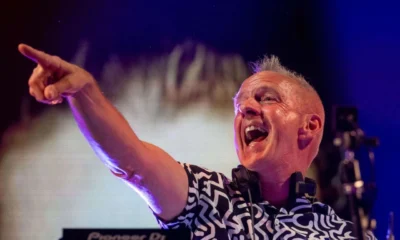There’s a moment on the dancefloor — when the bass syncs with your heartbeat, the lights swirl like thoughts, and every drop feels like clarity. If you’ve ever felt like the chaos of a rave somehow calms your mind, you’re not imagining it. For those of us with ADHD, electronic dance music isn’t just a vibe—it’s regulation.
What feels overwhelming to some feels like peace to an ADHD brain. And as it turns out, science has a lot to say about why repetitive beats, fast rhythms, and sensory overload can be exactly what our neurodivergent minds crave.
This isn’t just about loving loud music. It’s about dopamine. It’s about rhythm. It’s about how EDM offers a natural, sonic form of focus, presence, and freedom.
The ADHD Brain: Craving Stimulation, Chasing Dopamine

PET scan showing the difference between a brain with ADHD and a brain without it.
At the heart of ADHD lies a unique relationship with dopamine—the neurotransmitter responsible for motivation, pleasure, and focus. ADHD brains naturally produce lower levels of dopamine, which explains why mundane tasks can feel unbearable and attention constantly slips away.
It’s not that we can’t focus. It’s that our brains are perpetually scanning for the right kind of stimulation—intense, engaging, novel, and fast-paced—to bridge that dopamine gap.
That’s exactly where the rave comes in.
EDM: A Sonic Anchor for Neurodivergent Minds
Electronic dance music isn’t just loud. It’s structured chaos—precisely organized noise that hits differently for ADHD brains. The steady, repetitive rhythms act like an auditory anchor, helping bring order to mental clutter.
Science backs this up. A study published in the Journal of Attention Disorders found that rhythmic auditory stimulation significantly improved attention and task performance in individuals with ADHD. Further research from Frontiers in Human Neuroscience shows that listening to music with consistent beats can synchronize brainwave activity, leading to improved focus and cognitive regulation.
And there’s something magical about the tempo. Most EDM tracks hover between 120 and 140 beats per minute (BPM)—the exact range that studies associate with enhanced attention and improved executive function in ADHD brains.
In simpler terms? The drop isn’t just satisfying. It’s therapeutic.
Dancing: The Freedom ADHD Bodies Crave
ADHD isn’t just about attention—it’s deeply tied to movement. Sitting still often feels unbearable when the nervous system is dysregulated.
A rave solves that problem effortlessly.
The dancefloor is a space where movement isn’t just allowed—it’s celebrated. Every jump, sway, or fist pump becomes part of the collective rhythm. Dancing transforms restless energy into purposeful flow.
Dopamine Hits, Naturally and Powerfully
Stimulant medications like Adderall and Ritalin help ADHD brains by increasing dopamine availability. But here’s the kicker—music does something similar, naturally.
A groundbreaking study in Nature Neuroscience (Salimpoor et al., 2011) found that listening to music triggers dopamine release in two phases:
- Anticipation: As you wait for the beat to drop.
- Peak moments: When the drop hits, or the melody shifts in just the right way.
This is why certain songs feel euphoric—not just emotionally, but neurologically. EDM, with its tension-building rises and cathartic drops, is basically designed to trigger this dopamine loop.
In essence, what ADHD brains experience on the dancefloor is a form of sonic self-medication.
EDM Doesn’t Just Sound Good. It Feels Like Home.
If you’ve ever felt more yourself under strobe lights, surrounded by bass, moving without judgment—you now know why. EDM doesn’t just sound good to ADHD brains. It feels like home.
Follow us on
Instagram
Spotify



























